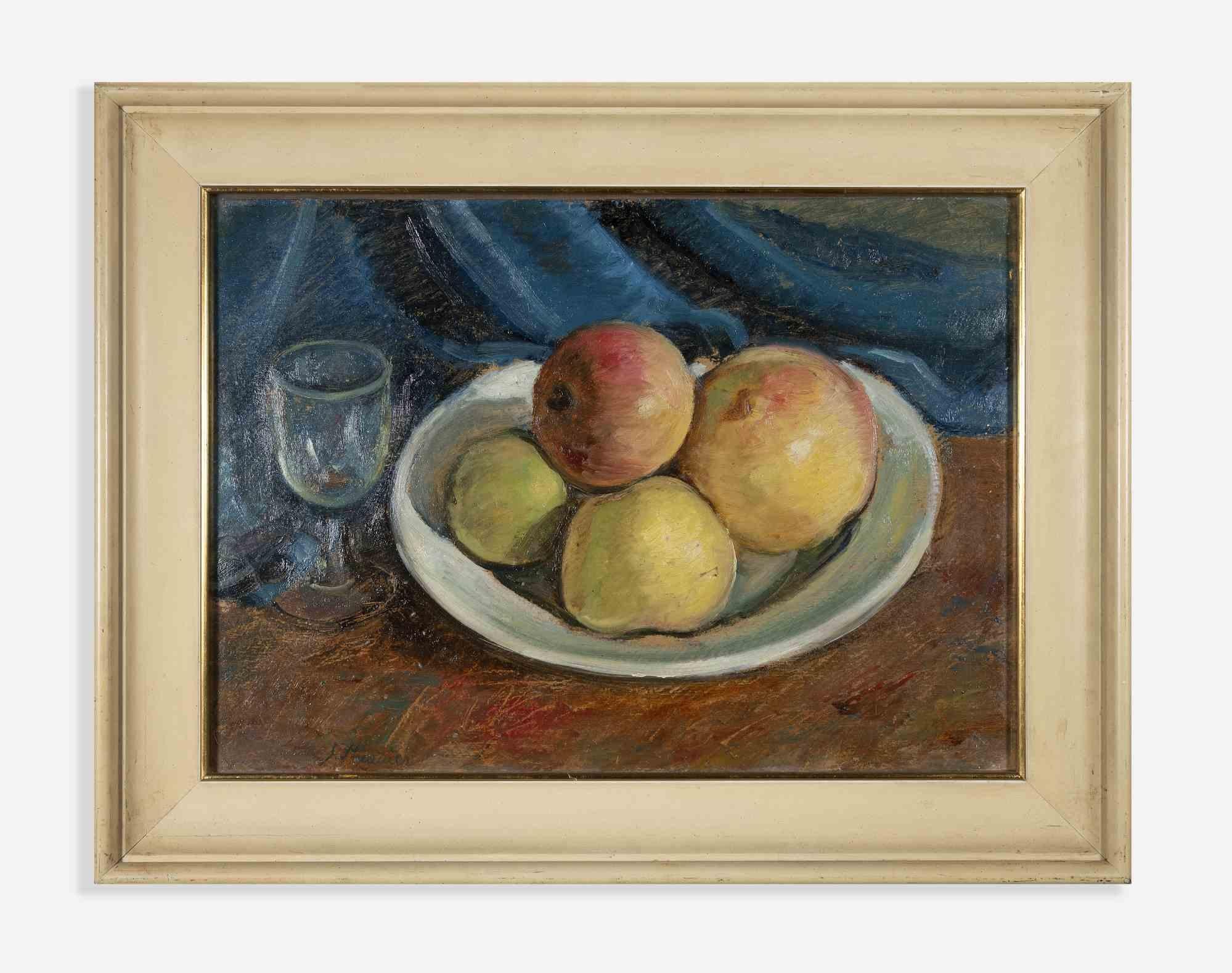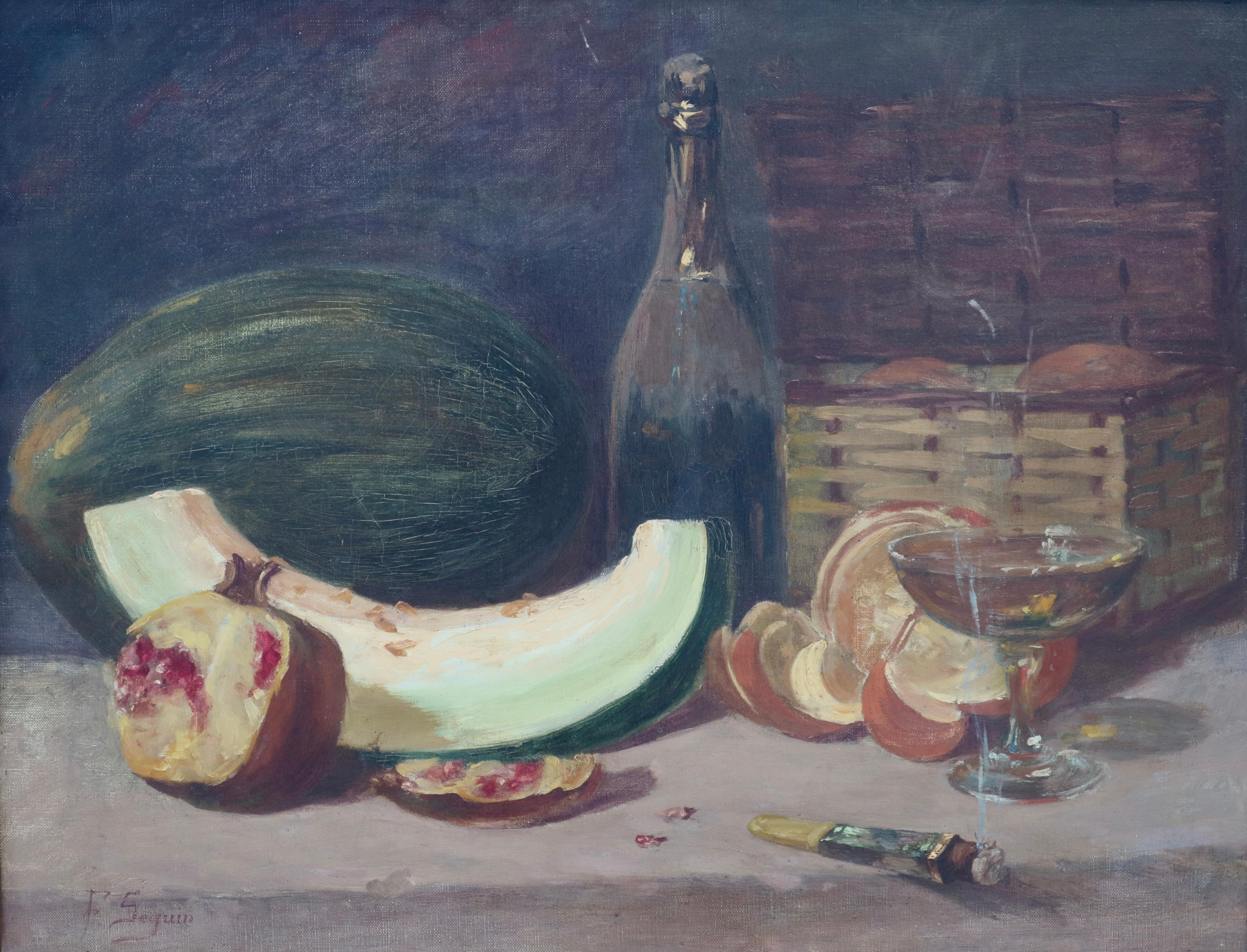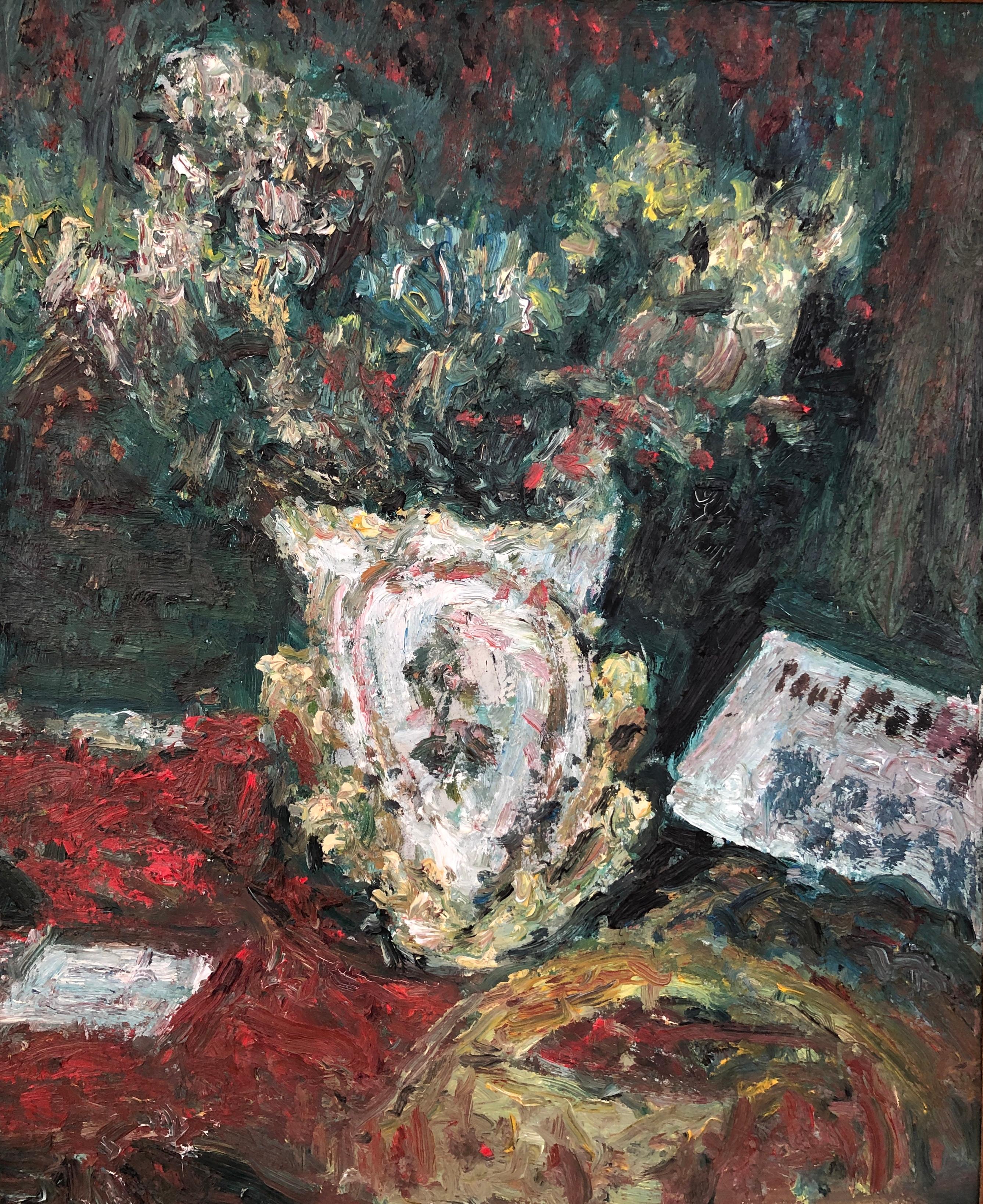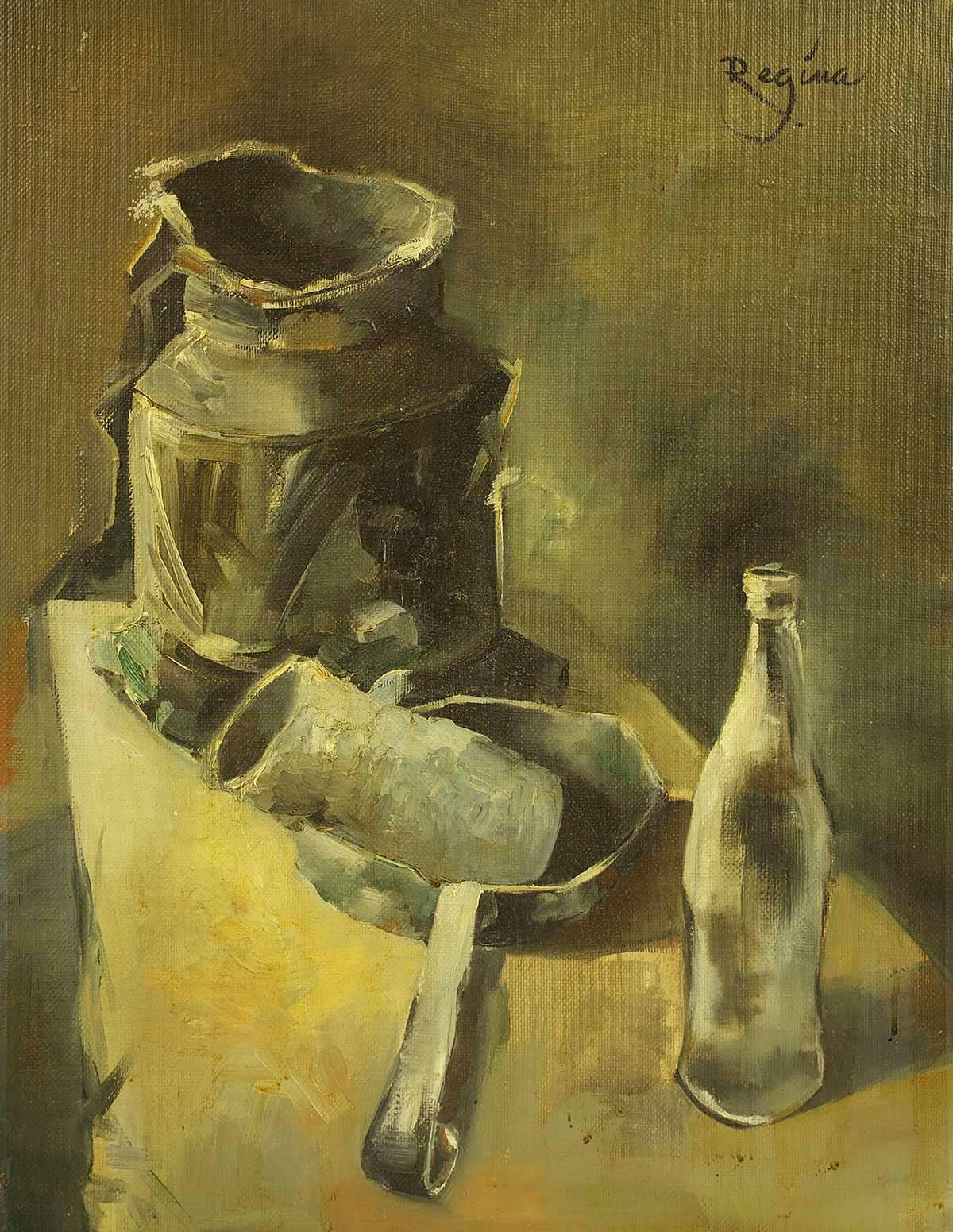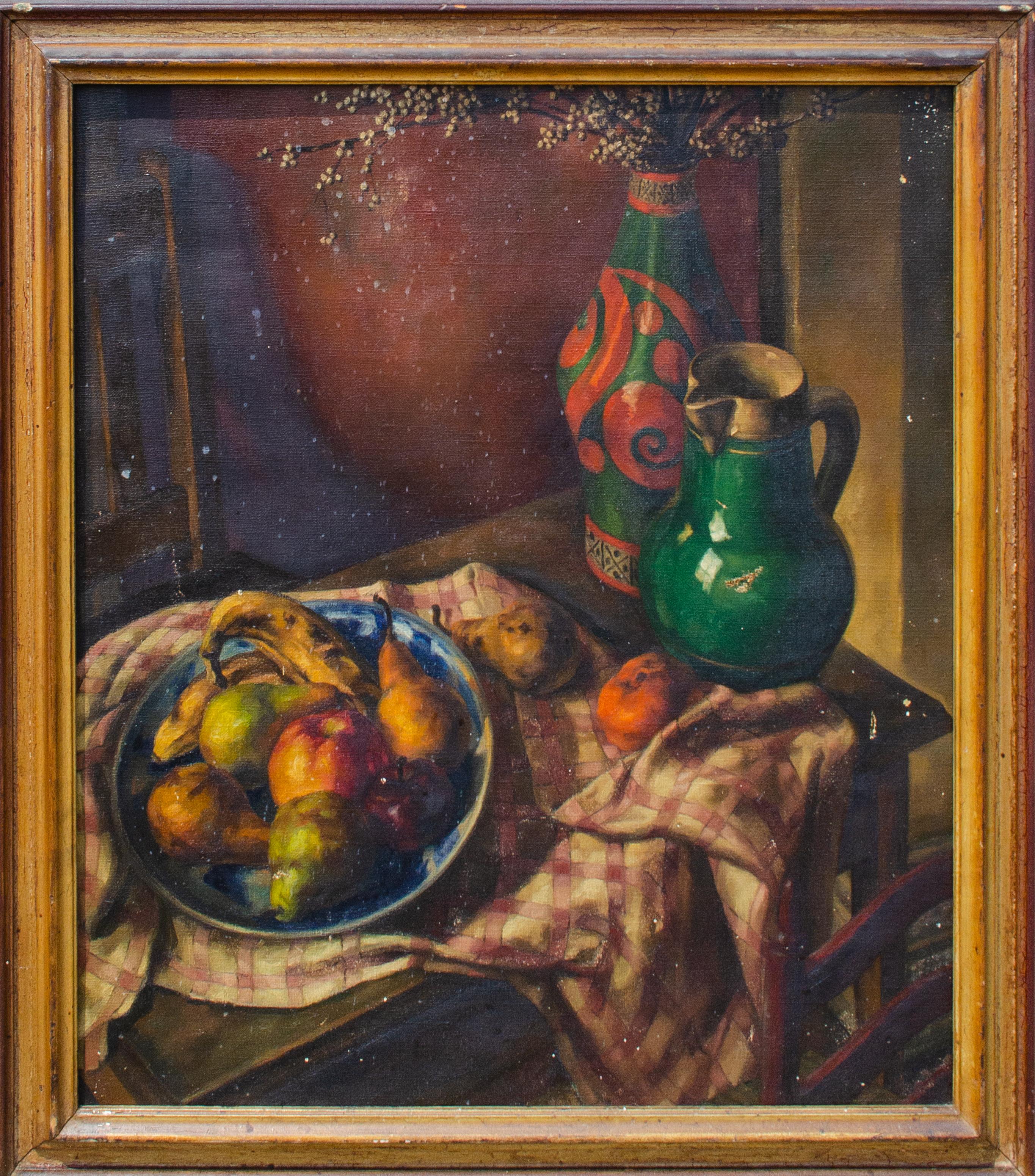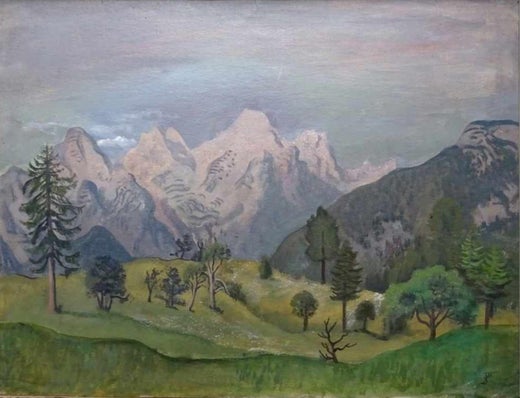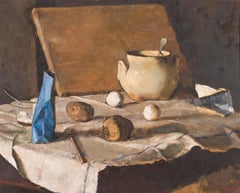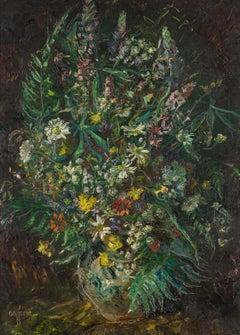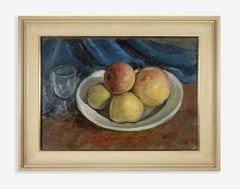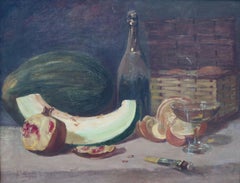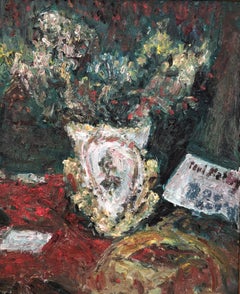Items Similar to Stilllife
Want more images or videos?
Request additional images or videos from the seller
1 of 5
August Wilhelm DresslerStilllife
$9,441.37
£7,027.18
€7,880
CA$12,932.32
A$14,383.56
CHF 7,510.65
MX$175,032.64
NOK 95,922.45
SEK 89,958.33
DKK 59,987.69
Shipping
Retrieving quote...The 1stDibs Promise:
Authenticity Guarantee,
Money-Back Guarantee,
24-Hour Cancellation
About the Item
August Dressler is one of the painters of the New Objectivity. He is one of the lesser-known artists of the Weimar era, but he too, like his famous contemporaries Georg Grosz, John Heartfield, and Otto Dix, was committed to social and political issues.
The Berliner-of-choice defied stubbornly the summary classification. Dressler acted truthfully to his origin, temperament and insight as an individual who presents his bond as obligation, who takes his program as template and his slogan as abomination. Only few painters of his generation restrain so inconspicuously from the revolutionary storm and new trends that found its most effective expression in Expressionism of ” the Bridge” group and in the mystical works of the ‘Blue Rider’. Dressler’s self-imposed isolation is based neither on his capriciousness nor is it intentional – it is simply one of the inner necessities of his artistic existence.
One does not do justice to his work, if one tries to interpret only the visible facts, the artistic or the technical qualities in Dressler’s works. This painter lived his destiny with a stubbornly determined consequence of his fate: the pictures are nothing else than the graphic metaphors of the ‘introverted gaze’. He experienced grief and loneliness already during his youth. Dressler learns early about the shadow side of human existence – it becomes the basis of the way he perceived the world. ” I cannot separate myself from what has established me ” – there was a very immediate connection and solidarity between the painter and his personal experiences (l’art pour l’art attitude). Thus Dressler identifies himself with those embodiments of petty-bourgeois narrowness, with those disappointed and abandoned, with those who appreciate simple joys of life and those with quiet hopes.
In his works the figurative language wins through its ability to depict and objectify feelings without words. Dressler does not paint to be modern or original. His way of perception is essential in a solid sense; he focuses on things, elements, and events that reflect a piece of life.
The closeness to the object and the attachment to the figure remain unchanged in Dressler’s oeuvre. One is tempted, looking at his works of five decades, to speak rather than about development but more of unfolding. The thematic inventory is from the beginning artist’s credo and basic motive: the form is added as the answer of the painter. It is Dressler’s personal preference not to correct reality nor to imitate it – his realism brings form and content, sensation and insight to life in a forceless manner.
Dressler feels, thinks and arguments his works on a more general level; his work is not an illustration of social misery or individual depravity. This “realist of the sharper tone” painterly transcends the limitations of genre and folklore; his “petty-bourgeois everyday life” is neither enclosed in the poor man’s pathos nor in the oh-human ecstasy. “Who controls the keyboard of nature”, proclaims Dressler, “can play in their own ways”.
Source: Delp’sche Verlagsbuchhandlung München (Ed.), August Willhelm Dressler, Munich 1970.
- Creator:August Wilhelm Dressler (1886 - 1970, German)
- Dimensions:Height: 33.08 in (84 cm)Width: 27.96 in (71 cm)
- Medium:
- Movement & Style:
- Period:
- Framing:Framing Options Available
- Condition:
- Gallery Location:Wien, AT
- Reference Number:1stDibs: LU1782212787852
August Wilhelm Dressler
Wilhelm August Dressler is one of the painters of the New Objectivity (...) and was committed to social and political issues. The Berliner-of-choice defied stubbornly the summary classification. Dressler acted truthfully to his origin, temperament and insight as an individual who presents his bond as obligation, who takes his program as template and his slogan as abomination. Only few painters of his generation restrain so inconspicuously from the revolutionary storm and new trends that found its most effective expression in Expressionism of ” the Bridge” group and in the mystical works of the ‘Blue Rider’. Dressler’s self-imposed isolation is based neither on his capriciousness nor is it intentional – it is simply one of the inner necessities of his artistic existence. One does not do justice to his work, if one tries to interpret only the visible facts, the artistic or the technical qualities in Dressler’s works. This painter lived his destiny with a stubbornly determined consequence of his fate: the pictures are nothing else than the graphic metaphors of the ‘introverted gaze’. He experienced grief and loneliness already during his youth. Dressler learns early about the shadow side of human existence – it becomes the basis of the way he perceived the world. ” I cannot separate myself from what has established me ” – there was a very immediate connection and solidarity between the painter and his personal experiences (l’art pour l’art attitude). Thus Dressler identifies himself with those embodiments of petty-bourgeois narrowness, with those disappointed and abandoned, with those who appreciate simple joys of life and those with quiet hopes. In his works the figurative language wins through its ability to depict and objectify feelings without words. Dressler does not paint to be modern or original. His way of perception is essential in a solid sense; he focuses on things, elements, and events that reflect a piece of life.
The closeness to the object and the attachment to the figure remain unchanged in Dressler’s oeuvre. One is tempted, looking at his works of five decades, to speak rather than about development but more of unfolding. The thematic inventory is from the beginning artist’s credo and basic motive: the form is added as the answer of the painter. It is Dressler’s personal preference not to correct reality nor to imitate it – his realism brings form and content, sensation and insight to life in a forceless manner.
Dressler feels, thinks and arguments his works on a more general level; his work is not an illustration of social misery or individual depravity. This “realist of the sharper tone” painterly transcends the limitations of genre and folklore; his “petty-bourgeois everyday life” is neither enclosed in the poor man’s pathos nor in the oh-human ecstasy. “Who controls the keyboard of nature”, proclaims Dressler, “can play in their own ways”. Source: Delp’sche Verlagsbuchhandlung München, August Willhelm Dressler, Munich 1970.
About the Seller
5.0
Vetted Professional Seller
Every seller passes strict standards for authenticity and reliability
Established in 1973
1stDibs seller since 2022
13 sales on 1stDibs
- ShippingRetrieving quote...Shipping from: Wien, Austria
- Return Policy
Authenticity Guarantee
In the unlikely event there’s an issue with an item’s authenticity, contact us within 1 year for a full refund. DetailsMoney-Back Guarantee
If your item is not as described, is damaged in transit, or does not arrive, contact us within 7 days for a full refund. Details24-Hour Cancellation
You have a 24-hour grace period in which to reconsider your purchase, with no questions asked.Vetted Professional Sellers
Our world-class sellers must adhere to strict standards for service and quality, maintaining the integrity of our listings.Price-Match Guarantee
If you find that a seller listed the same item for a lower price elsewhere, we’ll match it.Trusted Global Delivery
Our best-in-class carrier network provides specialized shipping options worldwide, including custom delivery.More From This Seller
View AllKüchenstillleben
By Heinrich Krause
Located in Wien, 9
If one tries to describe Heinrich Krause’s almost one-century work in a few words, one recognizes an artist who, despite continuously changing artistic trends, remains faithful to ce...
Category
20th Century Modern Still-life Paintings
Materials
Oil
Vase Früchte N°50
Located in Wien, 9
The artwork is signed on the lower left and inscribed verso with details about the work, the artist's atelier; artist stamp.
Category
20th Century Modern Still-life Paintings
Materials
Linen, Synthetic Resin
flower still life
Located in Wien, 9
The painter has revived an old motif for this painting. The earliest flower still lifes in Europe originate from Early Netherlandish painting. Earlier flower paintings come from West...
Category
Early 20th Century Modern Still-life Paintings
Materials
Canvas, Oil
Kreise
By Walter Strobl
Located in Wien, 9
Walter Strobl opens a new chapter in his explorations of the neverending tension between stillness and movement. Strobl´s vibrant nudes capture women in movement: they are there and gone again, letting the pictoral space pulsate with both the presence and absence of the outlines of their bodies. He paints women with a keen interest in the lived experience of the body, avoiding clichees in his depictions. The viewer is excluded from this inner sensation, but it is precisely the privacy of the model`s slumber that permits us to revel in our own proprioception. His cityscapes and still lives tell their...
Category
2010s Contemporary Still-life Paintings
Materials
Canvas, Oil
Fasching / Carneval
By Alfred Wickenburg
Located in Wien, 9
Monogr. and dat. lower left: AW / 37
The work is present in the catalogue raisonné of the Belvedere under the number Ex 26402.
Provenance: Private property, Graz (Austria)
Catalogu...
Category
1970s Modern Still-life Paintings
Materials
Canvas, Oil
Blumenbild
By Vilma Eckl
Located in Wien, 9
The extensive work of Vilma Eckl covers a period of more than seventy years. Her incomparable artistic talent and her essential contribution to the history of art can be seen in her ...
Category
20th Century Modern Still-life Paintings
Materials
Canvas, Oil
$18,559
You May Also Like
Still Life - Oil on board - Mid-20th Century
Located in Roma, IT
Still Life is an original modern artwork realized by an Unknown Artist in the mid-20th Century.
A mixed colored oil on board.
Hand signed on the lower left margin J. Meamier.
Incl...
Category
Mid-20th Century Modern Figurative Paintings
Materials
Oil
Armand Félix Abel Seguin, Still life
By Armand Seguin
Located in Tricase, IT
Armand Félix Abel Seguin
Still life oil on canvas 45x60 cm, with frame 95x110
Signed: F. Seguint he signature could be resolved with Armand Félix Abel Seguin.
Armand Félix Abel Segui...
Category
1880s Post-Impressionist Still-life Paintings
Materials
Canvas, Oil
$9,585 Sale Price
20% Off
Bouquet of flowers, Sèvres vase and small papers
By Paul Mathey
Located in Genève, GE
Work on canvas
Molded frame in gilded wood
Dimensions with frame : 60 x 51.5 x 4 cm
This work evokes a vibrant and textured scene, imbued with captivating emotional depth. In the ce...
Category
Mid-20th Century Modern Still-life Paintings
Materials
Oil
Still life
Located in Riga, LV
Still life
75x60cm, oil on canvas
Category
1990s Still-life Paintings
Materials
Canvas, Oil
Modernist Still Life, Jewish Polish Artist
By Regina Mundlak
Located in Surfside, FL
Regina Mundlak was born in a village near Lomza (NE Poland), into a poor Jewish family. In 1901 she went to Berlin to find work, together with her mother and sister, a highly talented violinist. Her extraordinary talent rapidly brought her to the attention of the Jewish artistic milieu. Her work so impressed Max Liebermann (1847–1935) that he decided to finance her education. However, even with his help, she had difficulty in making a living. Efraim Moses Lilien (1874–1925), who did not conceal his fascination with her talent, tried to help by publishing an open letter in Ost und West in 1902, appealing for support for her, but because of financial problems she finally had to give up her studies and return to her homeland.
At the age of fifteen she was already very skilled in drawing. At first she primarily created realistic portrait studies. The works she published in 1902 showed her rare power of observation. Her pen-and-ink drawings were also greatly admired. As her subjects she most often chose characteristic Jewish types from Eastern Europe.
She exhibited her works in Warsaw at the (Society for Promotion of Fine Arts) in 1902 and in 1903 and at the Aleksander Krywult Salon in 1903. In 1906, once again in Berlin, she exhibited her works at the Cassirer Salon. A review of this exhibition by Hermann Struck appeared in Ost und West. Like Lilien before him, he too wrote about her “phenomenal talent.” On the occasion of her exhibition, some of her drawings were reproduced in Ost und West. The development of her creative abilities in the years between Lilien’s letter and Struck’s review is noticeable. Drawings published in 1901 were portraits; compared to later works they evidence a skilful but still somewhat uncertain hand. The works created a few years later were characterized by a stronger and surer line. These works are also more developed: while the subject of her works remained the same, she now extended her interest in portraiture to the shape of the entire human body, presenting the figures in more elaborate environments.
Looking at the reproductions, one might conclude that she was interested in nothing but Jewish life in the Diaspora. There is a propensity to show the faces of older people...
Category
Early 20th Century Modern Still-life Paintings
Materials
Canvas, Oil, Board
Luigi Lucioni attr. Traditional American Still Life, 20th century
By Luigi Lucioni
Located in New York, NY
Attributed to Luigi Lucioni
Untitled (Still Life), c. 1900
Oil on canvas
30 x 26 in.
Framed: 34.5 x 30 in.
Born in Malnate, Italy, in 1900, Luigi Lucioni became one of America's well-known landscape painters, whose work has been noted for its heightened realism and photographic attention to detail.
Lucioni immigrated to the United States with his family in 1911. In 1915 he won a competition which allowed him to attend Cooper Union, and he began studying there with William Starkweather.
In 1920, he studied with William Auerbach Levy...
Category
Early 1900s Realist Still-life Paintings
Materials
Oil, Canvas
More Ways To Browse
Poor Things
Art Ledge
Bouquet Of Flowers In Vase Canvas Painting
Still Life Pitcher
Poppy Still Life Paintings
Oil Painting Of Roses In Vase
Anemone Art
Tropical Still Life
Fruit On Table Art
Oil Painting Flower Dark Background
Bread Painting
Dutch Old Master Still Life Painting
Hyper Realism
Used Oil Containers
Peonies Oil Painting
Peony Oil Paintings
Oil Still Life Flowers Painting Antique
Oil Paintings Of Iris
